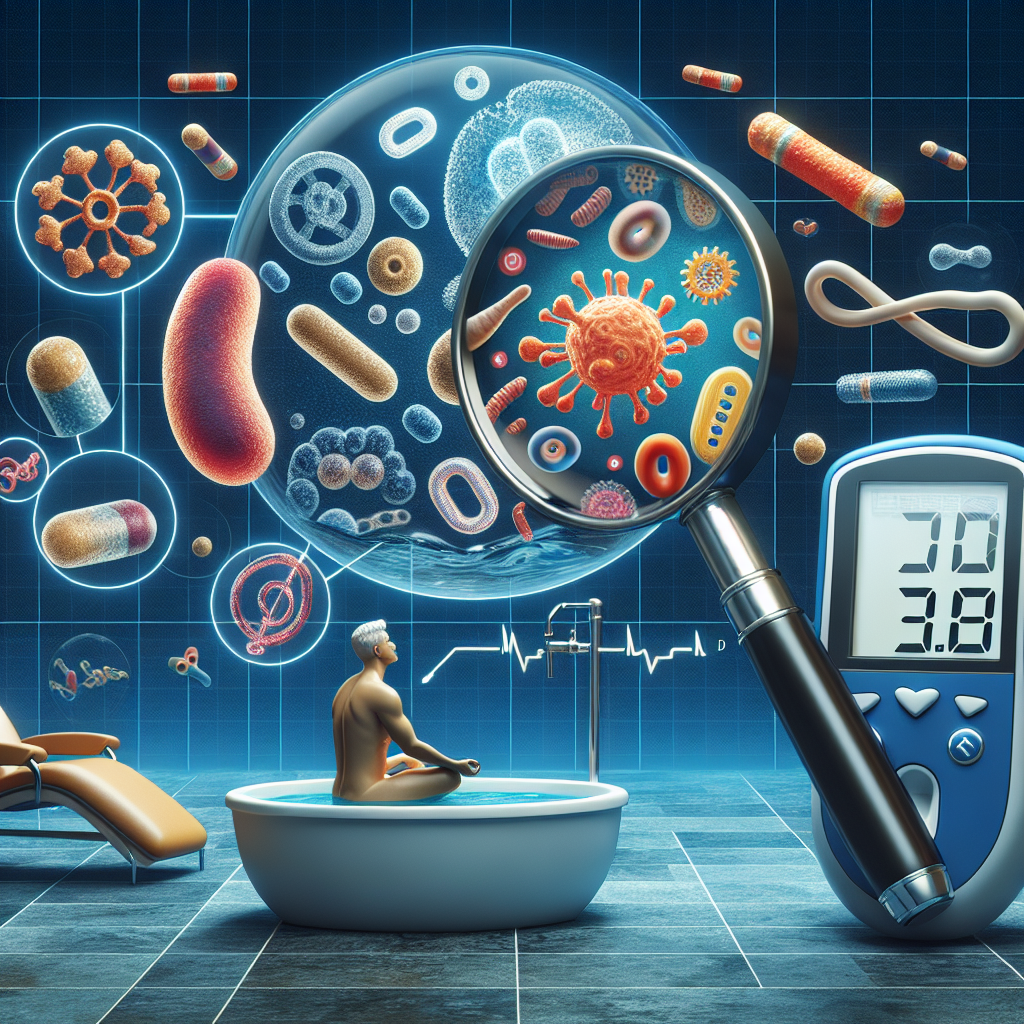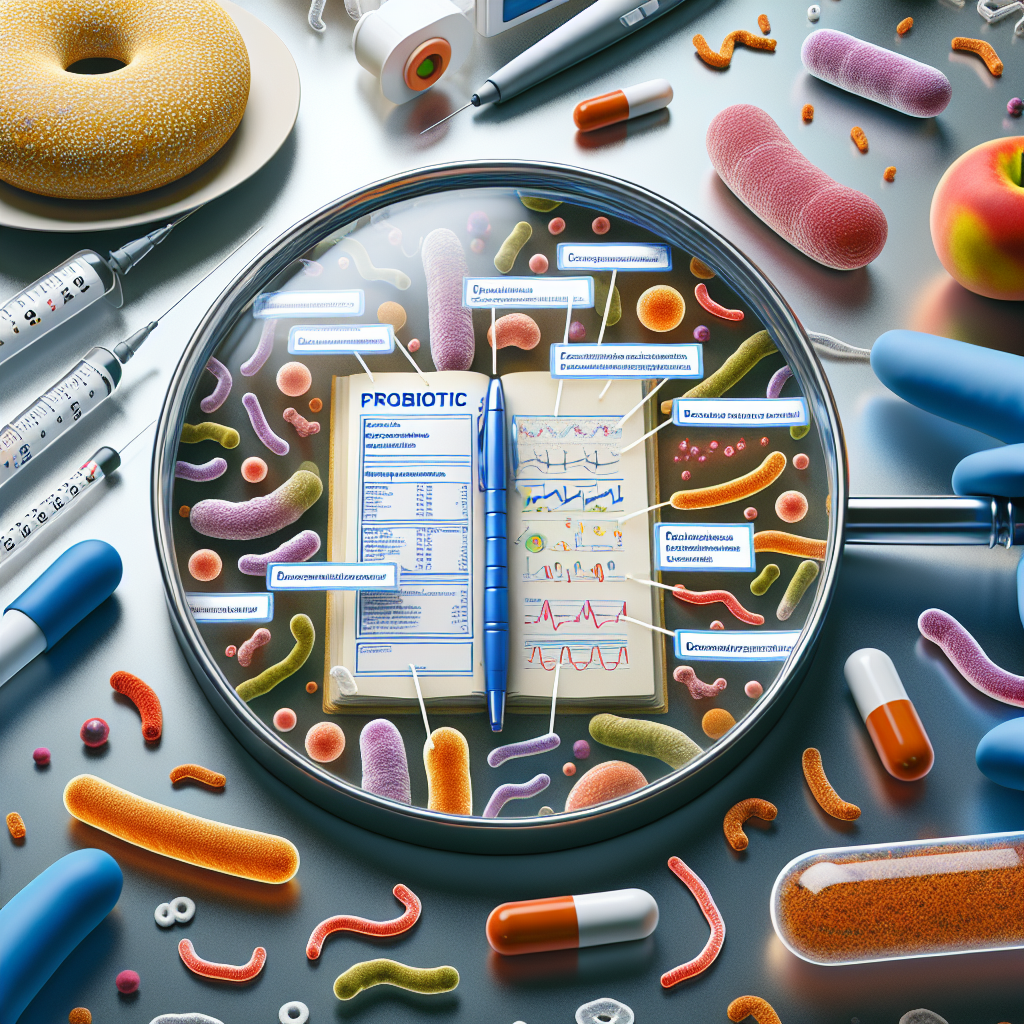
-
Hydrotherapy can help lower blood glucose levels in people with Type 2 diabetes.
-
Probiotics may improve gut health and aid in better blood sugar control.
-
Combining hydrotherapy with probiotics could have a synergistic effect on diabetes management.
-
Consistency in hydrotherapy routines and probiotic intake is key for maximizing benefits.
-
Always consult with a healthcare provider before starting any new treatment regimen.
A Splash into Better Health: Hydrotherapy for Diabetes Management
Imagine easing into a warm bath and not just relaxing but also helping to manage your diabetes. This is the power of hydrotherapy – a simple yet effective tool that you can use right at home. But how exactly does it help? Let’s dive in.
Understanding Hydrotherapy: The Basics
Hydrotherapy, also known as water therapy, involves the use of water for pain relief and treatment. The water can be ice cold or warm, and each temperature setting has its own benefits. For those with diabetes, particularly Type 2, warm water is where the magic happens.
When you immerse yourself in warm water, your muscles relax, and your blood vessels open up. This means that blood flows more easily throughout your body, which can help reduce blood sugar levels. It’s a gentle yet effective way to give your body a helping hand in managing diabetes.
How Warm Water Can Lower Blood Sugar Levels
Now, you might be wondering, “How does soaking in warm water lower my blood sugar?” Well, it’s all about circulation. Improved blood flow means that glucose can be transported more efficiently to where it’s needed in the body, and used up rather than just sitting in your bloodstream. Plus, the relaxation effect can also lower stress hormones that cause blood sugar spikes.
Here’s what to do:
-
Fill your tub with warm water, not too hot, to a comfortable level.
-
Soak for about 20-30 minutes to allow your body to reap the full benefits.
-
Do this regularly, aiming for at least 3-4 times a week.
It’s simple, relaxing, and beneficial. And the best part? You can do this at home without any fancy equipment.
Accessible Hydrotherapy Options for Home Use
If you’re thinking, “But I don’t have a spa or access to a fancy hydrotherapy pool,” don’t worry. You don’t need to break the bank to enjoy the benefits of hydrotherapy. A standard bathtub can work just fine. If you want to step it up a notch, consider a portable spa for your home. They are more affordable than ever and can be set up with ease.
Remember, consistency is key. Make hydrotherapy a regular part of your routine, and your body will thank you for it.
Choosing the Right Probiotic Strains for Diabetes

When it comes to probiotics, not all strains are created equal, especially for those managing diabetes. Probiotics are ‘good’ bacteria that can help balance your gut microbiome, which is crucial because a healthy gut can influence blood sugar control. The strains that you should look for include Lactobacillus acidophilus, Bifidobacterium bifidum, and Lactobacillus rhamnosus. These specific strains have been shown to help improve insulin sensitivity and reduce inflammation.
Synergistic Effects: Combining Hydrotherapy and Probiotics
Hydrotherapy and probiotics each have their benefits, but when you combine them, they can create a synergy that amplifies their individual effects on diabetes management. Hydrotherapy improves circulation and can aid in stress reduction, while probiotics can enhance gut health, which is linked to better overall metabolic function. Together, they can form a powerful duo in your diabetes care plan.
Creating an Effective Routine for Maximum Benefits
To get the most out of hydrotherapy and probiotics, consistency and timing are crucial. Set a regular schedule for your hydrotherapy sessions, and take your probiotics daily. Most importantly, give your body a chance to adjust to these new practices. You won’t see changes overnight, but with persistence, the benefits will unfold.
For hydrotherapy, consider these steps:
-
Choose a time of day when you can relax without interruption.
-
Ensure the water temperature is warm but not scalding, ideally around 92-100 degrees Fahrenheit.
-
Gradually increase the duration of your sessions as your body gets accustomed to the routine.
For probiotics, follow these guidelines:
-
Select a high-quality probiotic supplement with the strains beneficial for diabetes management.
-
Take your probiotic at the same time each day to establish a routine.
-
Store your probiotics as recommended, often in a cool, dry place or refrigerated, to maintain their efficacy.
When to Take Probiotics Around Hydrotherapy Sessions

Timing is everything. To optimize the benefits, take your probiotics at least a couple of hours before or after your hydrotherapy session. This helps ensure that the probiotics have enough time to settle in your gut without interference from the temperature changes due to the hydrotherapy.
Real Stories, Real Results: Testimonials from the Diabetic Community
Stories from those who have walked this path before can be incredibly motivating. Take Sarah, for instance, a Type 2 diabetic who started using hydrotherapy and probiotics together. She noticed that not only did her blood sugar levels improve, but she also felt more energetic and less stressed. Her story is a testament to the power of combining these two therapies.
Inspiring Success Stories of Improved Diabetic Health
Another inspiring story comes from Mark, who struggled with managing his blood sugar levels despite medication. After incorporating regular hydrotherapy sessions into his routine and taking a daily probiotic, his A1C levels started to decline. Mark’s experience shows the potential impact of integrating holistic practices with traditional medicine.
Lessons Learned: Common Challenges and How to Overcome Them
While the benefits are clear, the journey isn’t always smooth. Some common challenges include finding the time for hydrotherapy and remembering to take probiotics. To overcome these, set reminders on your phone or create a visual chart. It’s about making these practices a non-negotiable part of your day. Remember, the goal is to manage your diabetes better, and these tools can help you do just that.
Finally, always consult with your healthcare provider before starting any new treatment regimen. They can provide personalized advice and ensure that hydrotherapy and probiotics are suitable for your specific health needs.
FAQs: Hydrotherapy and Probiotics for Diabetes Control
1. Can hydrotherapy alone significantly reduce blood sugar levels?
While hydrotherapy has been shown to aid in the reduction of blood sugar levels, it should not be considered a standalone treatment for diabetes. It’s most effective when combined with a healthy diet, regular physical activity, and any prescribed medications. Think of hydrotherapy as a complementary tool that can enhance your overall diabetes management plan.
2. What are the most important probiotic strains for diabetics?
The most beneficial probiotic strains for individuals with diabetes include Lactobacillus acidophilus, Bifidobacterium bifidum, and Lactobacillus rhamnosus. These strains have been associated with improved insulin sensitivity and reduced inflammation, which are key factors in managing diabetes.
For example, a study published in the journal “Diabetes Care” found that the intake of the probiotic strain Lactobacillus reuteri improved the glycemic control in individuals with Type 2 diabetes over a 12-week period.
3. How often should diabetics engage in hydrotherapy?
For the best results, diabetics should aim to engage in hydrotherapy sessions regularly, about 3-4 times a week. Each session should last approximately 20-30 minutes. However, it’s important to listen to your body and adjust the frequency and duration of the sessions based on personal comfort and health condition.
4. Are there any risks of combining probiotics with hydrotherapy?
Combining probiotics with hydrotherapy is generally safe for most people. However, if you have any underlying health conditions or are taking medications, it’s crucial to consult with your healthcare provider. This ensures that the combination of treatments does not interfere with your health or any prescribed treatment regimens.
5. What diet should accompany hydrotherapy and probiotic intake?
A balanced diet that is low in simple sugars and saturated fats, and rich in fiber, whole grains, and lean proteins, should accompany hydrotherapy and probiotic intake. This type of diet can support the beneficial effects of both hydrotherapy and probiotics on blood glucose management. Additionally, staying hydrated is essential, especially when engaging in hydrotherapy, to ensure optimal body function.


